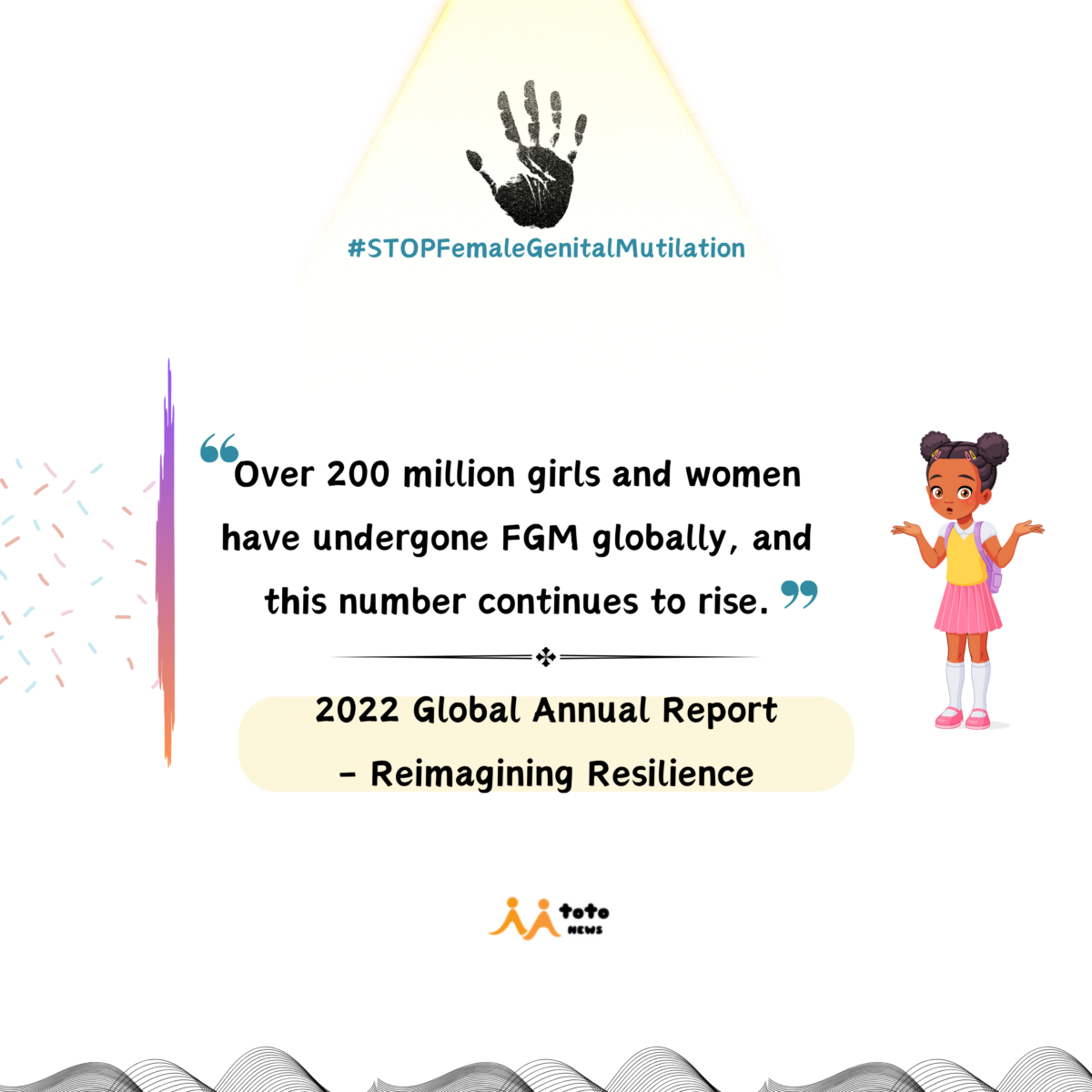Female Genital Mutilation (FGM) is when parts of a girl’s genital area are cut or changed for reasons that are not medical. It is usually done to girls before they become adults, and can involve cutting parts or all of the external genital organs. In some cases, other harmful actions, like stitching or narrowing the vaginal opening, are also performed.
FGM is not done for health reasons. Instead, it is often carried out because of cultural, religious, or social beliefs. Some people believe that FGM ensures a girl’s purity, controls her sexuality, or makes her more suitable for marriage. However, FGM does not offer any health benefits and can harm the body in many ways.
The effects of FGM are serious and include:
- Physical Harm: FGM can cause pain, bleeding, and infections. It can also lead to long-term health problems like trouble urinating, menstrual issues, and difficulties during childbirth.
- Psychological Effects: Many girls and women who undergo FGM experience emotional harm, anxiety, depression, and post-traumatic stress disorder (PTSD).
- Risk of Death: In some cases, FGM can even lead to death, especially if it is done in unsafe and unsanitary conditions.
- Long-Term Health Problems: FGM can cause long-lasting health issues, such as infertility, problems during childbirth, and chronic pain.
Around the world, FGM continues to affect millions of girls and women. It has been practiced for many generations and is deeply connected to tradition. But it also represents a conflict between culture and human rights.
Over 200 million girls and women have experienced FGM, and this is a big concern for human rights and development. Although there has been some progress, the journey is difficult. The UNFPA-UNICEF Joint Programme on the Elimination of FGM launched Phase IV in 2022, aiming to end FGM by 2030. However, challenges remain, especially due to overlapping global crises, including conflicts, climate change, and the COVID-19 pandemic. These crises make it more likely for families in poverty to choose FGM, thinking it will help their daughters get married.
In areas hit by conflict or climate disasters like droughts or floods, families may feel pressured to marry off their daughters at younger ages to improve their marriage prospects. The lack of access to education during these times increases the risk of FGM.
Countries where FGM is common often face instability, like Eritrea, Somalia, Sudan, and Yemen, where girls are more vulnerable to the practice. Education is a powerful tool in fighting FGM. Research shows that girls and women with some education are more likely to oppose FGM. For example, girls whose mothers had basic education are 40% less likely to undergo FGM compared to those with mothers who had no education. However, in areas where many girls aren’t in school, the risk of FGM is even higher, affecting future generations too.
The financial costs of FGM are huge. The World Health Organization estimates that the healthcare costs for girls and women suffering from FGM-related conditions are about $1.4 billion every year. This cost falls heavily on some of the world’s poorest nations, deepening existing inequalities and making development harder. There is also a large gap in funding for the global fight against FGM. To eliminate FGM in 31 countries by 2030, $3.3 billion is needed, but only about $238 million is currently available.
In 2024, new reports show that the challenges in addressing FGM are growing, especially as global crises continue. Despite this, the UNFPA-UNICEF Joint Programme is pushing forward with its work. One of their efforts includes a toolkit to prevent FGM during emergencies and crises. This toolkit ensures that vulnerable communities can access important services to prevent and respond to FGM.
The 2024 reports also highlight the importance of educating girls and women about their human rights. This education helps them protect themselves from FGM and encourages others to join the fight against it. The strategy aims to build a strong movement for eliminating FGM, with support from communities, service providers, and policymakers.

